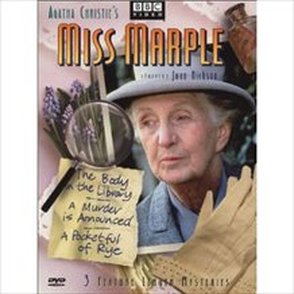
Three decades of lesbian scholarship have borne witness to our incredible courage and creativity in the face of unremitting misogyny and homophobia. Where are the stories, the representations of our lives and our loves?
Well, imagine my surprise to discover an authentic depiction of a old lesbian couple in an Agatha Christie episode filmed by the BBC in 1985. [Click here for selected lesbianic excerpts from the show.]
Even for a series about a woman detective, "A Murder Is Announced" stands out as unusually woman-centered. Not only is the entire plot built on a matrix of female bonding: love between sisters, between girlhood friends, between a wife and her husband's secretary, and between lesbians, but, in fact, the lesbian relationship provides the key to solving the mystery. And the original mystery was written in 1950!
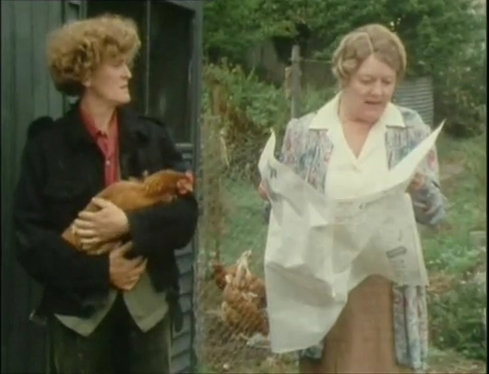 Hinch and Murgatroyd
Hinch and Murgatroyd I found myself replaying and fast-forwarding to watch the scenes with the two lesbians, and as I did this, I asked myself why I should be so fascinated with such obviously old-fashioned and stereotypical representations of lesbians at a time when I could download so many more recent lesbian films.
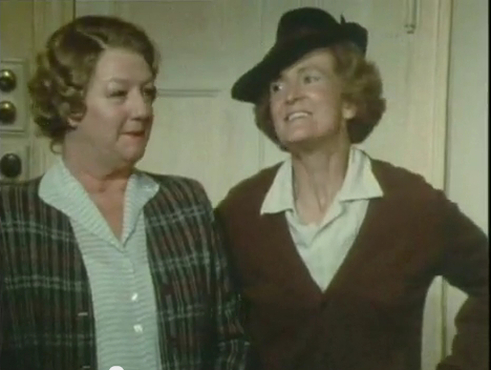 Lesbians in a rural British village in 1950
Lesbians in a rural British village in 1950 This is evident from comparisons with the other characters: the communist student-idealist, the mysterious war widow, the potentially unbalanced refugee, the long-lost school chum, the retired army officer, and the upper class "waster." All of these characters are charming, shifty, and one-dimensional. Their heterosexual relationships are blatant plot devices, which even the actors cannot invest with any authenticity. Not so Murgatroyd and Hinch, whose behaviors are complex and coded.
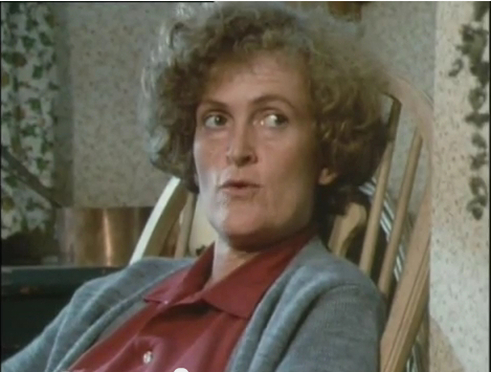 "I think it's a man doing this, because we all know what dirty dogs men are."
"I think it's a man doing this, because we all know what dirty dogs men are." to the police inspector, it is not only to cast herself in the light of being the responsible partner, but also to shield Murgatroyd from the questions of the police and the eyes of the community. In this scene, Hinch makes a point of mentioning her fondness for liquor, her war service record, and the fact that she has seen things that would make the inspector's hair curl. Caught slopping the pigs, she makes a show of her affection for the animals, as if she were indulging herself in a hobby instead of performing a menial task. When Murgatroyd joins them, Hinch hovers over her -- correcting, mocking, and confusing her. Editorializing on the inadequacy of Murgatroyd's answers, Hinch successfully deflects the inspector's interest in both of them and redirects it toward the other villagers. Even as she patronizes her partner, she throws a protective arm around her and makes it clear that the inspector will have to deal with her if he intends to badger her lover.
Two later scenes are even more illuminating. Both women are at home in their modest cottage. In both scenes, Hinch is puzzling over the murder they have witnessed. She recruits Murgatroyd's aid in re-enacting the shooting. Overtly, Murgatroyd follows Hinch's orders, anxious to please her mistress. Overtly, Hinch is acting in a high-handed and domineering way. But watching the scenes a second time, a different quality emerges. When Murgatroyd mentions that she remembers hitting her foot against the door, Hinch stops mid-hunch to address her concern for Murgatroyd's failure to see a chiropodist about her corns. Later, Murgatroyd, caught up in the drama of the re-enactment, drops her deferential act, and we see her emerge, if only for a few seconds, as a full partner to her irascible lover.
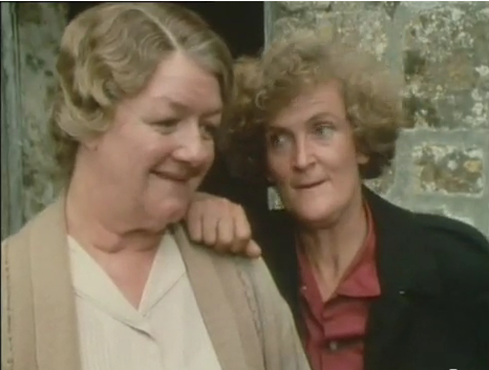 "I think you'll find the vicar's wife more helpful than the two of us. We're more used to pigs."
"I think you'll find the vicar's wife more helpful than the two of us. We're more used to pigs." Back at the cottage, Hinch blames herself for Murgatroyd's death, because the re-enactments had been her idea -- "silly games." Miss Marple, in a very tender scene, gently asks her to focus on the killer's identity. Later, Miss Marple will make inquiries about how Hinch is doing. The inspector notes that she seems to have aged ten years.
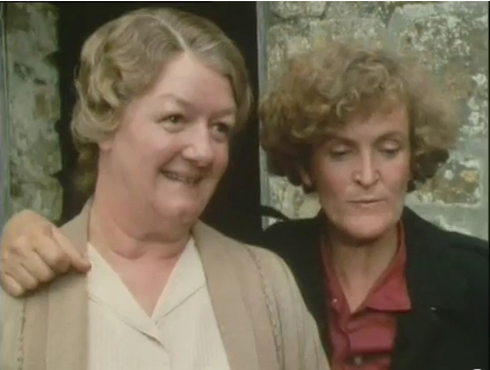 Murgatroyd: "Oh, Hinch, was I so very awful?" Hinch: "As usual, you were quite astonishing."
Murgatroyd: "Oh, Hinch, was I so very awful?" Hinch: "As usual, you were quite astonishing." 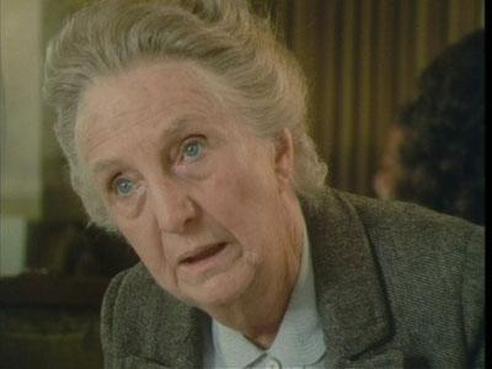 Miss Marple... another "spinster?"
Miss Marple... another "spinster?" There appear to be several links for viewing this episode online. Click here for one of them.
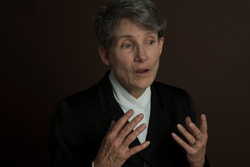
 RSS Feed
RSS Feed
